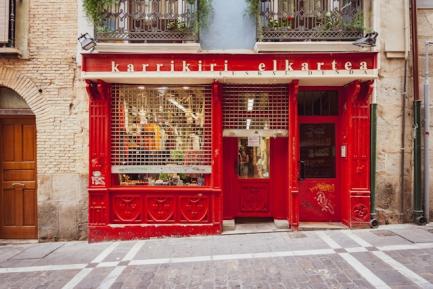e-commerce: several year’s progress made in just a few months
The pandemic has inevitably brought about major changes in our consumption habits. Faced with the impossibility of going to a store in person, online shopping channels have gained a lot of share in 2020. According to an analysis of CaixaBank’s internal data, this growth has not only been significant but also widespread among companies of different sizes and sectors, and has encouraged many of them to use e-commerce as a sales channel for the very first time.

The harsh mobility restrictions imposed to combat the spread of COVID-19 have undoubtedly dealt a severe blow to the Spanish economy but they have also speeded up some of the changes we had already been observing. One of the changes seeing the greatest growth, and also which we have been monitoring the most, is the adoption of e-commerce by retailers. Given the mobility restrictions and social distancing, online sales are providing a boost for the retail sector that has helped to avoid an even more complex economic situation during the pandemic.
To analyse the progress of online sales, we have used the consumption indicator compiled from CaixaBank’s internal data, evaluating the trend in retail without the trade in essential goods, which perform very differently to the rest of retail trade.11 As can be seen in the chart below, e-commerce sales have performed very well since the start of the pandemic. Between the months of April and May 2020, when mobility was restricted the most, e-commerce spending achieved triple-digit growth, reaching spending volumes only surpassed in the week of Black Friday in recent years. This growth rate moderated as restrictions were eased and people could once again make face-to-face purchases. Nevertheless, the growth rates have consistently remained above 50% compared to 2019, except at very specific moments.
- 11. We have excluded food and pharmacy sales from the analysis since the effect of the restrictions on the consumption of these types of goods was the opposite of that observed for trade in non-essential goods during the early part of the pandemic.
CaixaBank retail consumption indicator1
Variation compared to the baseline (%)2

The trend described for e-commerce is in clear contrast to the performance of face-to-face sales which, as can be seen from the chart, fell sharply during the first state of emergency and, to a lesser extent, during the second and third waves of COVID-19 in November 2020 and February 2021, respectively. In 2020 as a whole, face-to-face retail spending fell by 23% compared to 2019, while e-commerce grew by 69% year-on-year. As a result, the growth in online sales cushioned the impact on the sector’s turnover, down by 15%.
One question that should be asked is what type of commerce has been able to benefit from this growth in online sales. Switching to selling online or expanding existing e-commerce channels entails significant investment in digitisation, representing a barrier for smaller businesses, especially those having to adopt this channel for the very first time. Nevertheless, according to an analysis of CaixaBank’s internal data, the growth in e-commerce has been widespread, observed in both large and small companies, as well as in companies with e-commerce experience and also new entrants.
the growth in e-commerce has been widespread, observed in both large and small companies, as well as in experienced companies and new entrants
As the following chart shows, as of May 2020 the contribution made by new entrants to the growth in e-commerce sales increased steadily, reaching 30% of the total. However, after the second state of emergency was announced on 25 October 2020, this upward trend ended. This is probably because, in events such as Black Friday and the Christmas season, the most consolidated e-commerce retailers once again captured the bulk of online sales. However, the contribution made to e-commerce growth by new entrants was very high in 2020 as a whole, revealing that this shift to internet sales has also occurred in stores that were not previously online.
If we look at the dynamics of e-commerce by company size, we can observe two different stages. First, during the months of the first state of emergency, large companies made up the bulk of e-commerce growth. Small businesses found it more difficult to react immediately and many had to wait until they were able to open in person in order to start adapting to e-commerce sales.
large companies made up the bulk of e-commerce growth. Small businesses have taken longer to react

From the end of June, coinciding with the end of the state of emergency, the dynamics of e-commerce began to change in favour of smaller businesses. Specifically, from that moment on, the possibility of opening their doors made it easier for many small businesses to adapt to the online sales channel. As a result, in July and August online sales by smaller companies generated about half the sector’s total growth in e-commerce.
CaixaBank retail e-commerce indicator1
Contribution to year-on-year change (pp)

Internal CaixaBank data also suggest that the increase in online sales is not concentrated within a few types of trade; in fact quite the opposite. All retail categories have posted appreciable growth during 2020, although we expect to see e-commerce growth moderating in favour of greater on-site spending following the lifting of restrictions.
It is therefore interesting to estimate to what extent the growth in e-commerce is here to stay. To this end, the chart below shows the trend in the share of online purchases as a percentage of total purchases in the different branches of retail activity. As can be seen, the share of e-commerce picked up strongly in 2020 in all branches. However, if we compare the trend of recent years with the record of March 2021, a month with notable restrictions but not particularly hard on retail trade, we can see there are some branches of activity (bookshops and stationers, as well as textiles) where the share of face-to-face consumption has returned to normal. On the other hand, for the rest of the branches of activity, part of the extraordinary gains made in 2020 was still visible in March 2021, to some extent suggesting a possible change in consumption patterns.
Face-to-face consumption is sure to remain one of the main supports for retail trade
In conclusion, e-commerce has grown considerably after the emergence of COVID-19. This growth, moreover, has been «democratic» since both large and small companies (although the latter took a little longer) have taken advantage of the boost provided by the mobility restrictions to online consumption. It has also been a very steep learning curve, so that new entrants to e-commerce were behind much of the growth in 2020.
However, it is too early to judge how much of this change will be structural and how much will dissipate once we get over the health crisis. Face-to-face consumption is sure to remain one of the main supports for retail trade. Nevertheless, it is difficult to see a future for retail without the sector committing clearly and strongly to digitising its sales channels, enabling many small businesses to access a much larger and more diversified market and consumers to access a market with a much wider range on offer.

- 11. We have excluded food and pharmacy sales from the analysis since the effect of the restrictions on the consumption of these types of goods was the opposite of that observed for trade in non-essential goods during the early part of the pandemic.





